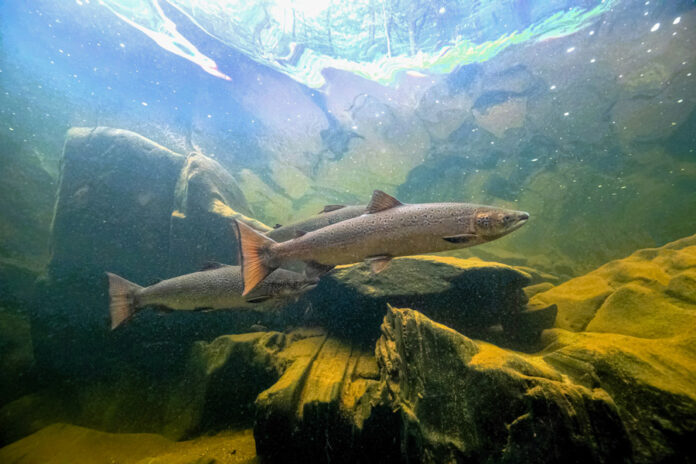Written by: Atlantic Salmon Federation staff
Once abundant throughout the northeastern United States, Atlantic salmon now persist in just a few rivers in Maine. Although the species is critically endangered, the Atlantic Salmon Federation (ASF) has made great strides to restore critical habitat, creating real hope for the future.
Salmon need access to the prime spawning grounds in the headwaters of Maine rivers like the Penobscot and Kennebec. Twenty years ago, nearly 90% of that habitat was inaccessible—blocked by dams and other obstructions.
With a combination of determined advocacy and boots-on-the-ground conservation work, ASF and its partners have removed obstructions both large and small. Collaborating with willing dam owners and local communities, ASF’s Maine Headwaters Project has removed dams, constructed fishways, and replaced undersized culverts, all while addressing human needs by creating parks, improving access, and enhancing public safety.

To date ASF has completed over 60 projects, reconnecting more than 1,200 river miles and upwards of 35,000 acres of lake and pond habitat to the Gulf of Maine.
Where stagnant impoundments once choked life, free-flowing rivers now support recovering ecosystems. Maine’s 12 species of sea-run fish are all rebounding, none more dramatically than river herring, keystone species that include American shad, blueback herring, and alewife. Spring runs have surged to exceed 6 million fish on the Penobscot and Kennebec rivers.
And there’s no plan to slow down. One of many projects on the go is the removal of the Chesterville Dam on a tributary to the Kennebec River in summer 2025. The project will restore access to 29 stream miles of coldwater habitat and to three ponds that historically supported alewives.

Restoring freshwater connectivity has increased biodiversity, abundance, as well as climate resilience—real results for wild salmon and their ecosystems.
Visit the Atlantic Salmon Federation website to become a member of the community, and support ASF’s dam removals and habitat restoration projects throughout North America.
Credit: Source link






























